Until we got the Bryce Canyon National Park, Wendy and I thought that Badlands National Park was the weirdest place we’d ever seen. Now, this is the weirdest place we’ve ever seen. The National Park Service describes the area as a “forest of stone,” and it is exactly that.
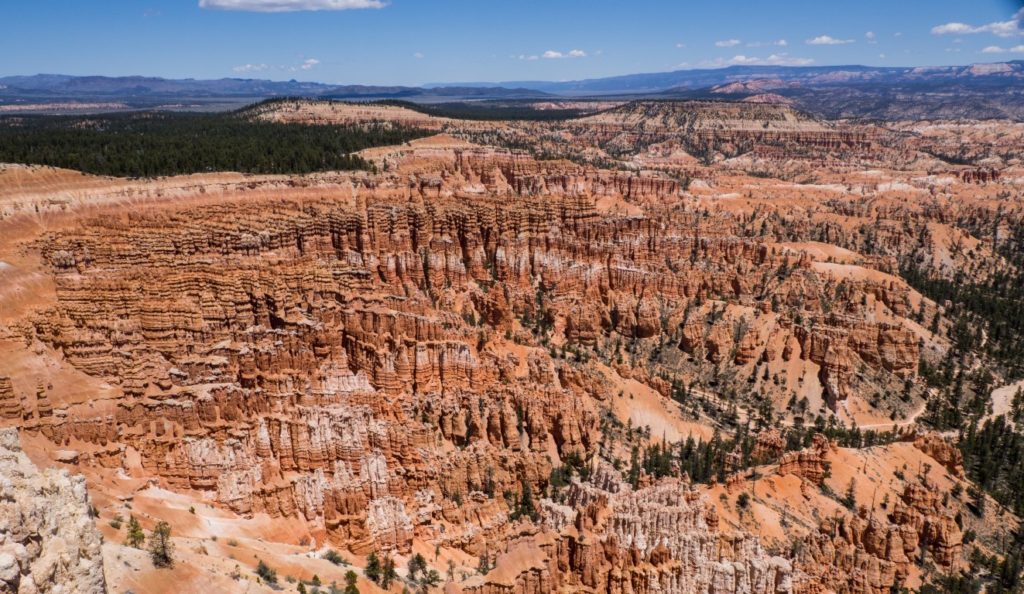
I noted in jest that Badlands could be a set for a grade-B science fiction movie, something like Amazon Women from Venus. It turns out that areas of hoodoos such as these actually have been used to film grade-B science fiction movies (Space Invaders, I think); that’s how other-worldly is the theatrical effect of these formations.
Like the other parks we’ve been to lately, this area is part of the Colorado Plateau, an area of 130,000 square miles that got lifted straight up as a solid block about 7000 feet in a series of uplifts between 65 and 15 million years ago. Then nature started eroding the heck out of the area, apparently with an intent to give us the national parks that have been our stopping points over the past few weeks. Bryce Canyon got its bizarre appearance because this area was a series of lakes prior to the uplift where layer after layer of plain-old mud got deposited. The upper layer turned into “dolostone,” a kind of mud-based rock that is more resistant to erosion that the limestone mud layers beneath it. So, as erosion occurred, the fractured and broken dolostone protected small columns of underlying limestone as other, unprotected areas eroded away. The result is thousands of spires capped by weather-resistant tops. Different amounts of iron the mud-based rock layers result in the horizontal striations seen in the formations.
All of that is fascinating if you’re some kind of geology wonk, but it does nothing to describe the effect that hits your eye like a big pizza pie when you actually see it. So, we spent one morning walking from the upper end of the Bryce Canyon “amphitheater” (as the area of hoodoos is called) all the way to the other. And here’s what’s even weirder. In areas, one is just walking through an ordinary pine forest:
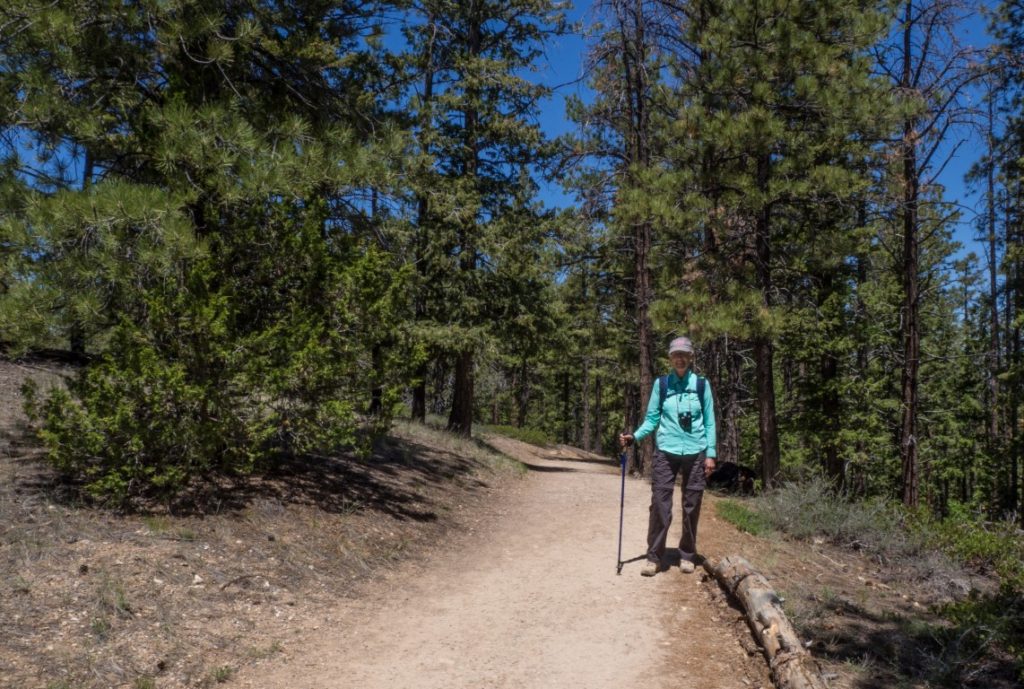
Except that if you stop for a moment and take a look over your shoulder, like at a stop for a picnic, this is the scene:
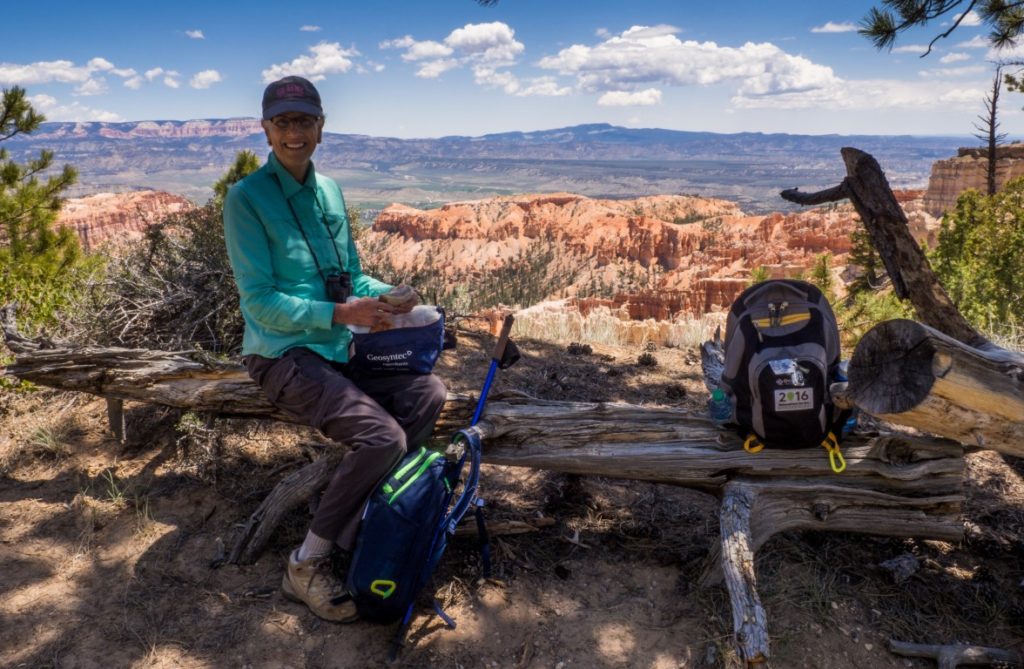
Ebenezer Bryce was once asked to describe the area and his response, in true, understated, Mormon fashion was, “It’s a hell of a place to lose a cow.” Indeed.
At sunrise and sunset, especially if the sky shines in oranges and reds, the whole canyon lights up. In places, the rocks reflect back on each other and it’s as if the rocks are illuminated from within.
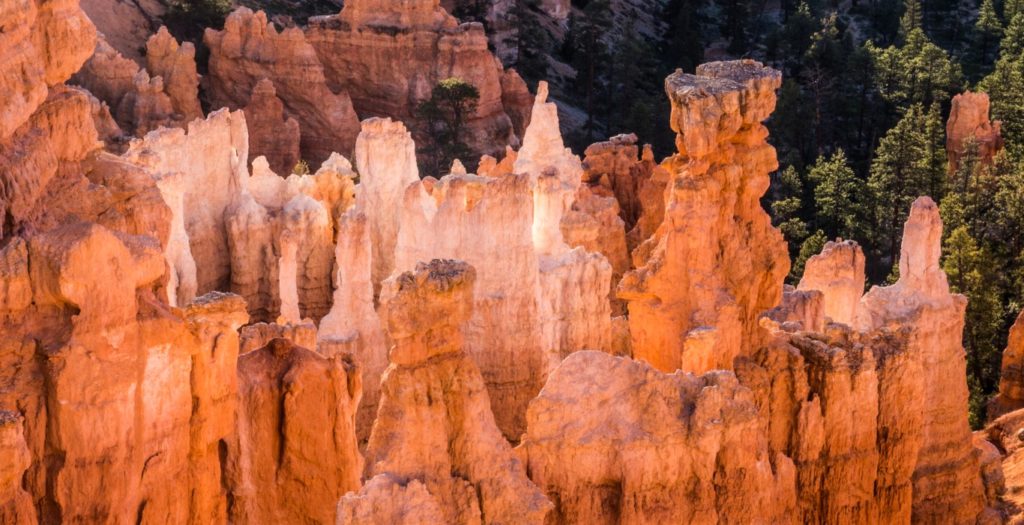
And if you think these things are weird from the top, you should see them from the bottom! One day we took a hike down into the hoodoo-filled canyon floor, and we were completely awestruck to an equal degree.
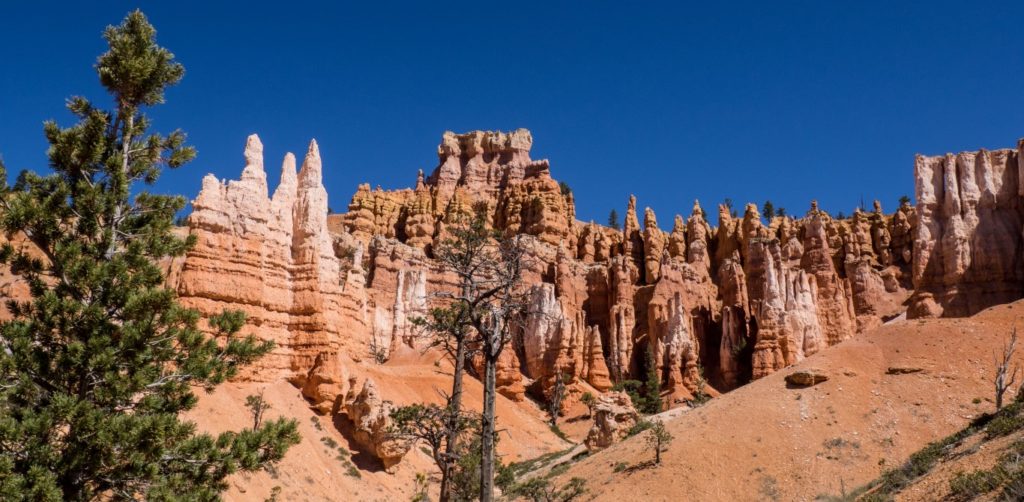
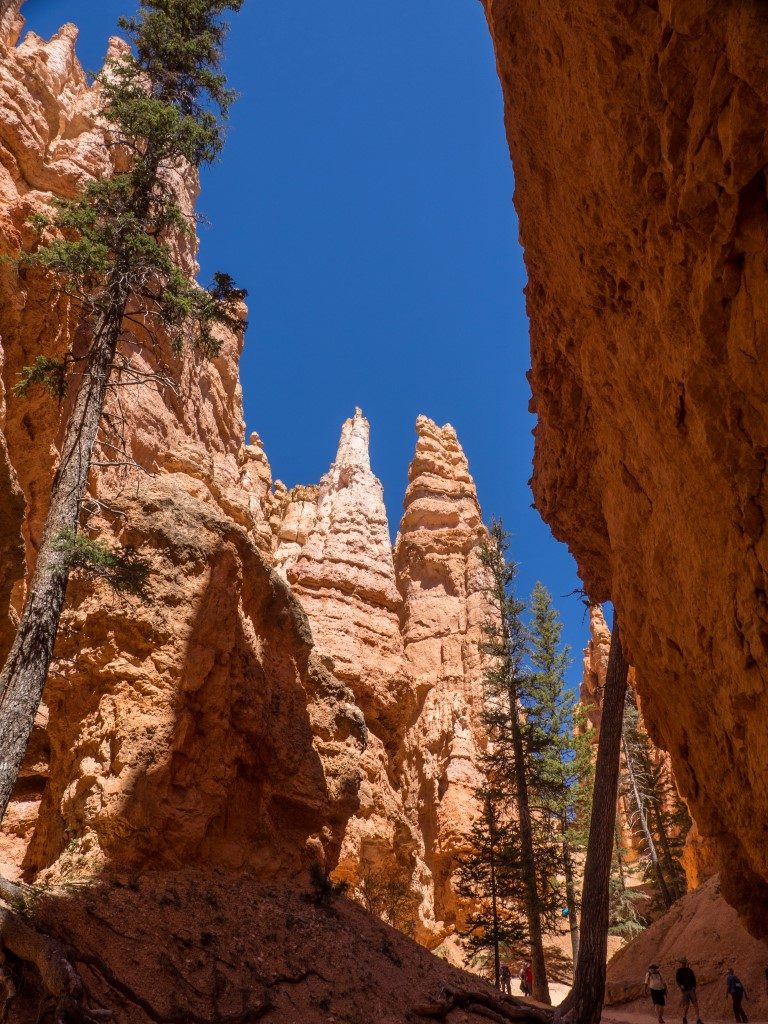
Although the experience at the canyon floor was wonderful, it did present one teensy-weensy, hardly-worth-mentioning problem: we had to get out of the canyon floor. That involved a hike up a trail consisting of 36 switchbacks rising 550 feet. Quite an experience for a couple old geezers!
One thing for sure: this is definitely not a place to let the kids run loose. Even the Park Service has signs everywhere saying, “Dangerous Cliffs … Watch Your Children.” Countless times we heard little boys say something like, “Put me down…” or “Let me go…” and the parental refrain was always, without exception, the exact same words: “No way.”
And I did my usual photo thing, including getting up early one morning to get some sunrise photos:
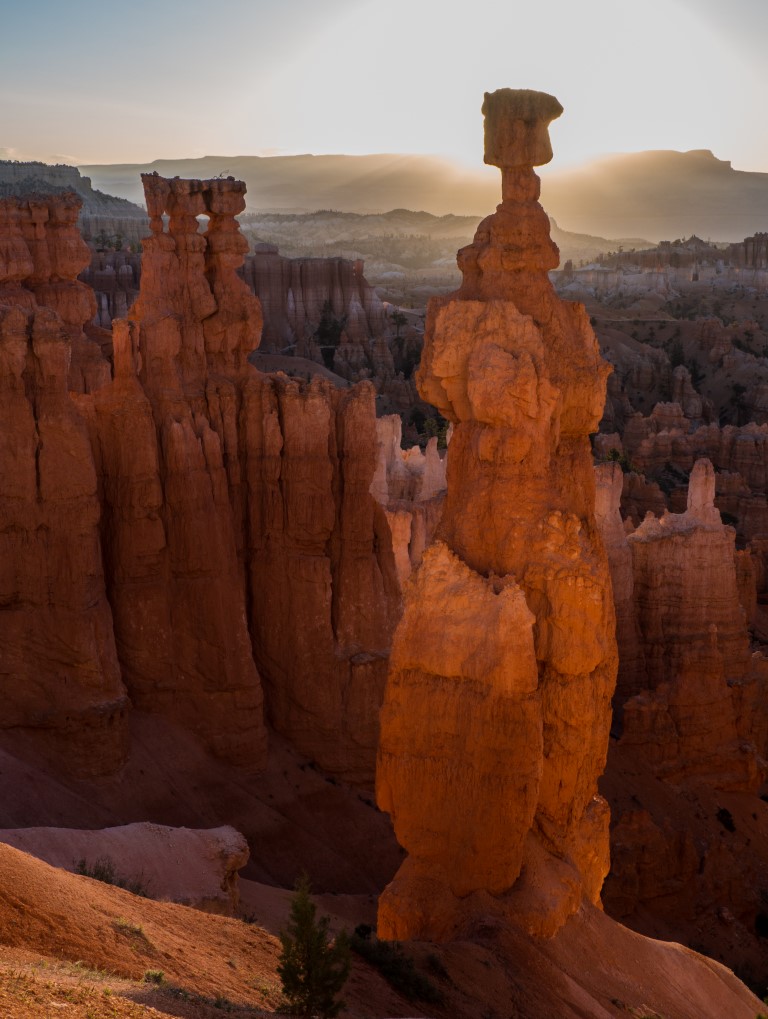
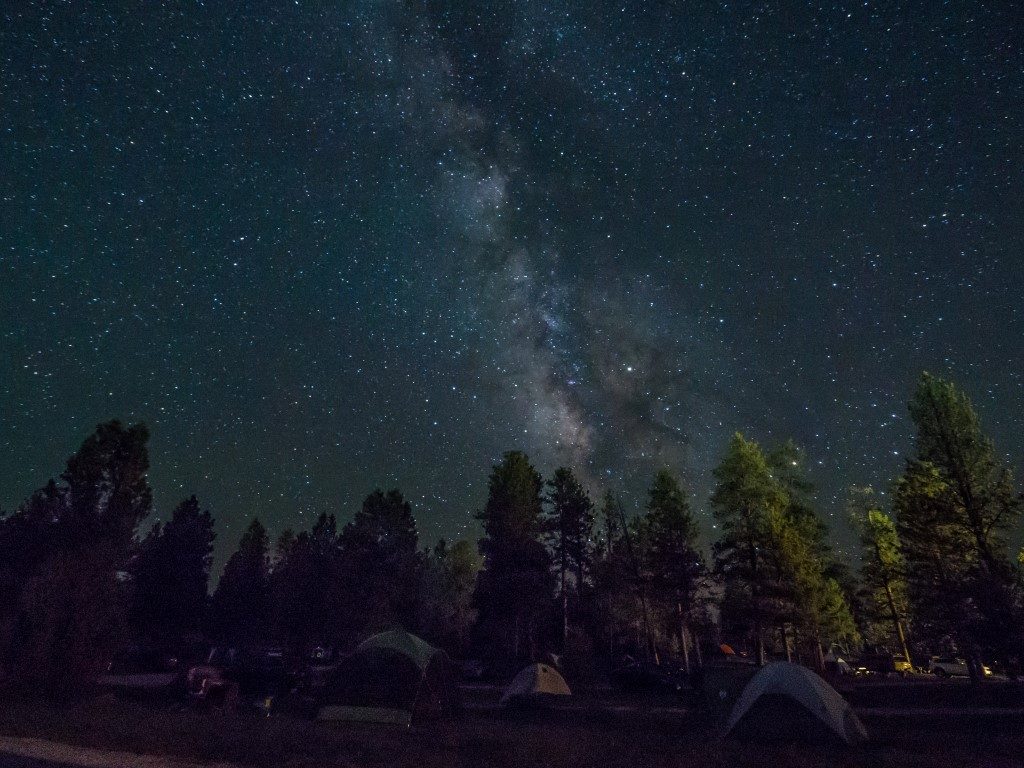
So, we’re kind of stuck. This might be our favorite park so far, at least in terms of visual impact. Or maybe it’s still Arches. Or maybe Canyonlands. Or maybe it will be Zion, where we’re headed next. The only thing we’re sure of at this point is that we’re starting to get worried that the Grand Canyon will be something of a let-down. Think about that for a moment…
